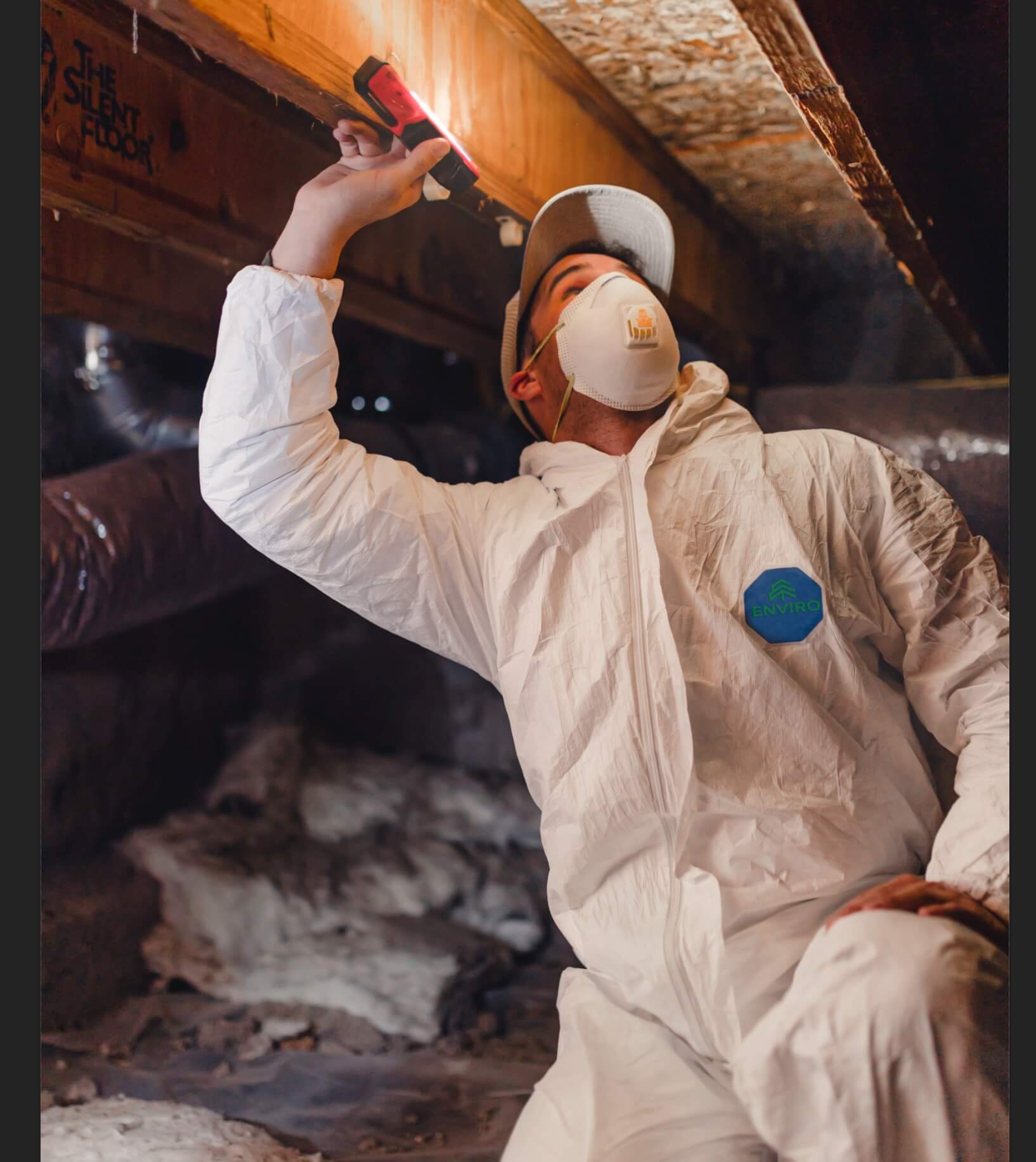What is a Mold Inspection and Do You Need One?
Are you concerned that there may be black mold in your home or office? What does the term ‘black mold’ mean anyways? Having a mold inspection done is a crucial process that involves a thorough assessment of indoor areas to find any mold presence and understand its potential effects on both the surroundings and the people inhabiting them. Certified experts, specializing in identifying and analyzing mold growth, conduct this essential task, usually when water damage occurs or occupants are experiencing negative health symptoms. The significance of mold inspection lies in upholding a safe and wholesome living or working setting. It aids in uncovering concealed mold problems, pinpointing the causes of mold development, and offering guidance on effective ways to address the issue. Throughout this article, we’ll explore the fundamental elements of mold inspection, its importance, and the steps it entails. Our goal is to equip you with knowledge that will empower you to ensure the well-being of your indoor spaces.
How much Does a Mold Inspection Cost?
One of the first concerns that comes up when scheduling a mold inspection is cost. The cost of a mold inspection can vary widely based on several factors, including the size of the area being inspected, the location, the extent of the mold issue, the type of testing required, and the specific company you hire. Here’s a rough estimate of the potential costs associated with a mold inspection:
Basic Visual Inspection:
A basic visual inspection for mold might start at around $200 to $300. This type of inspection involves a professional visually assessing the affected areas for mold growth and moisture issues. If there is visible growth present you may not need testing to be performed. Mold remediation protocols are conducted the same regardless of specie type.
Air Quality Testing:
Air quality testing, which involves collecting air samples to measure mold spore levels, can cost around $400 to $700 or more, depending on the number of samples taken and the complexity of the testing. Air samples are typically collected to help evaluate for hidden mold problems and to determine if other areas of the structure have been affected via cross contamination. Air sampling is also a good way to evaluate the effectiveness of remediation after cleaning has been complete.
Surface Testing:
Surface testing, which involves collecting samples from suspect surfaces, may cost around $200 to $500 or more, depending on the number of samples and types of surfaces being tested. This is helpful to determine if belongings are affected from being in close proximation to a mold source and establishing a cleaning protocol for affected belongings.
Full Inspection with Testing: If you opt for a comprehensive inspection that includes both visual assessment and testing, the cost could range from $500 to $1500 or more, depending on the factors mentioned above. A full inspection should include a written report and protocol detailing out remediation standards and a full scope of work.
Finding the Right Inspector for You:
Mold evaluation in many states and countries is not regulated extensively and it is up to the buyer to do their due diligence before hiring a mold specialist. Here are a few key things to consider before scheduling your mold inspection:
Services Offered:
Collecting samples and sending them to a lab is not the same thing as giving actionable advice based on the data collected. Make sure your inspector is willing and able to provide you with helpful interpretation of the lab results and a list of next steps to take. The last thing you want is to be left holding a chart of complicated numbers with no explanation.
Experience:
Are they certified? How many years of experience do they have? Not all certifications are equal, so make sure that there is experience to go along with the education that they have received and that they have a history of being able to provide helpful solutions to their customers.
Niche:
Are you suffering from severe health effects? Are you needing a clearance evaluation after remediation has been completed? Or are you in the middle of a complicated real-estate transaction and mold is threatening to break apart the deal? Every inspector has their area(s) of expertise and it’s important that they understand what you are needing from the inspection and the required documentation for the job.
Timing and Communication:
Having the inspection done doesn’t help if you don’t get your results in time or if your inspector is never available to help walk you through the findings. Make sure your inspector can operate within the desired timelines and is able to communicate with you affectively through the process.
Non-Biased: Your inspector shouldn’t stand to gain financially if they find mold or blow test results out of proportion. That means if they are associated with a remediation company who stand to gain a larger job if mold is found, it should be considered a red flag. Always work with someone you trust and make sure bias isn’t influencing their final recommendations.
Final Thoughts:
Understanding the purpose and end goal of the inspection should be your guiding thought throughout the process. Determining if black mold is present is less about color and more about specific mold species which will require laboratory testing. Ensuring everyone involved is on the same page with similar goals will help guarantee that the project is completed properly with no issues.

